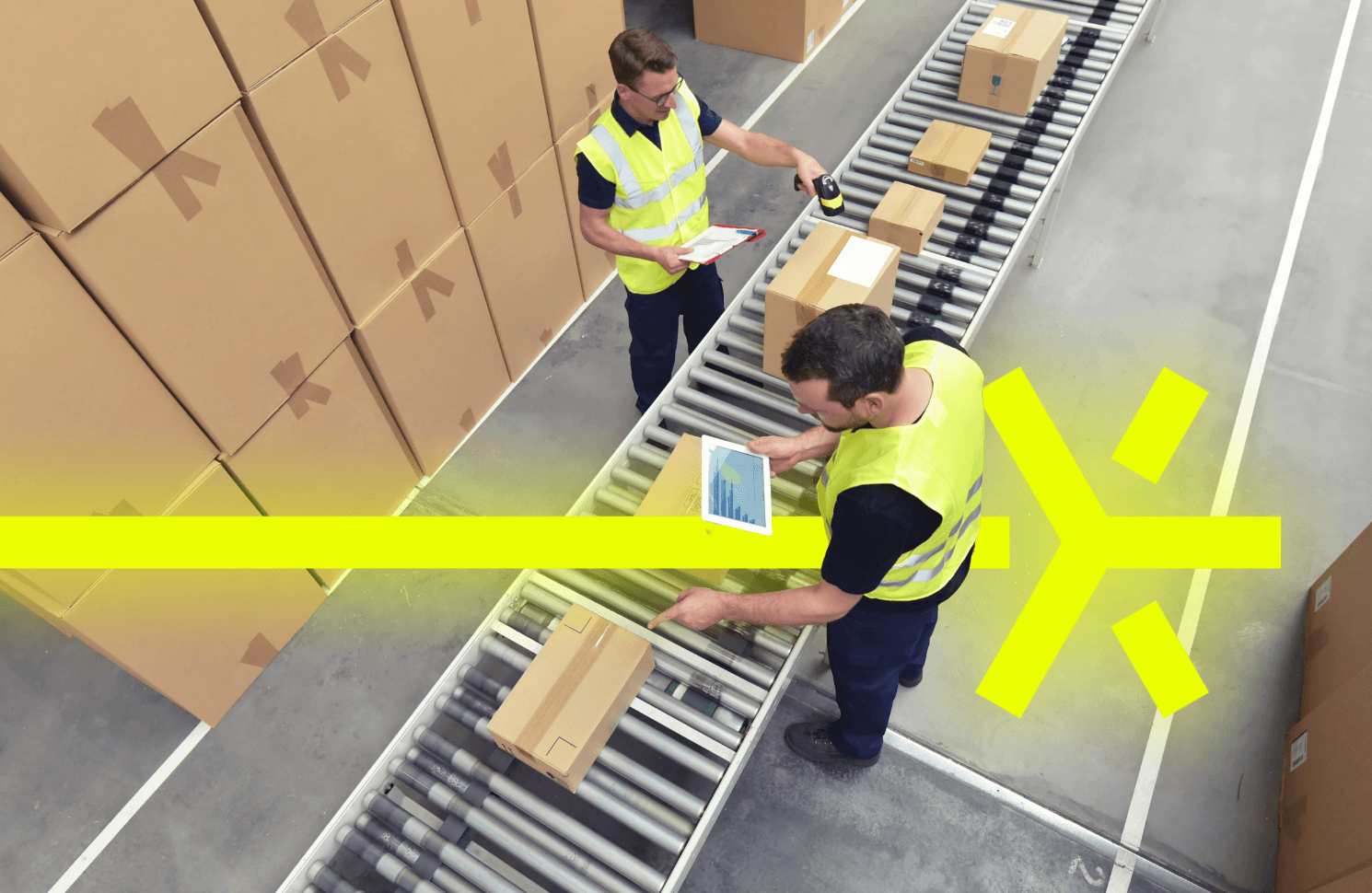

Data warehouse modernization made simple for IT executives
JUN. 25, 2025
5 Min Read
Every quarter, you are asked to deliver bigger insights with tighter budgets.
Legacy data warehouses built for nightly batch loads can no longer meet real-time expectations from business partners. Cloud platforms, modular architectures, and AI‑powered automation now give CIOs a short path to faster analytics without rewriting an entire stack. The modernization journey succeeds when it cuts costs, reduces technical friction, and puts fresh intelligence in the hands of decision makers sooner.
Still, modernizing a critical warehouse feels risky because past migrations often ran over budget and over schedule. Proven reference patterns, transparent financial metrics, and continuous delivery remove that uncertainty. Executives who re‑platform data at the right moment discover new growth levers and free their teams for higher‑value work. Start with clarity on business outcomes, align technology choices to those outcomes, and treat modernization as an iterative program, not a single event.
key-takeaways
- 1. Cloud data warehouse modernization allows CIOs to reduce infrastructure costs while improving scale, speed, and flexibility.
- 2. AI can be integrated directly into warehouse workflows once pipelines are stable and insights are ready for action.
- 3. Governance is most effective when built into pipelines through automated tools and policy-as-code frameworks.
- 4. Incremental delivery tied to 90-day outcomes keeps modernization aligned with business value and stakeholder support.
- 5. Lumenalta helps CIOs modernize with reference patterns, outcome-driven sprints, and measurable cost and performance gains.
What is data warehouse modernization, and why does it work today

Modernization means refactoring the data warehouse infrastructure and operating model so that analytic workloads scale whenever needed and new data sources flow in almost instantly. The process usually shifts storage and compute to a cloud‑native platform while decoupling ingest, processing, and presentation layers through APIs. Because cloud services separate compute from storage, teams can pause heavy jobs during quiet periods and avoid paying for idle hardware. Most importantly, the updated warehouse supports real‑time feeds that let business units act on transactions or sensor signals within minutes.
Until recently, this approach carried high risk due to immature tooling and brittle migration scripts. Today, automation frameworks map source tables to cloud objects, replicate schemas, and validate row counts with minimal manual effort. Vendors now bundle change data capture, continuous schema evolution, and cost monitoring, so complexity stays contained. That convergence of tooling and consumption‑based pricing explains why executives see rapid payback from projects that once felt too disruptive.
"Executives that re‑platform data at the right moment discover new growth levers and free their teams for higher‑value work."
Why data warehouse modernization matters for CIOs right now
You oversee budgets, compliance, and service levels, so aged data infrastructure impacts every metric on your scorecard. When overnight batch pipelines miss their service window, regional offices wait hours for revenue numbers, and stakeholders question IT's credibility. Cloud‑ready warehouses finish complex joins in seconds, freeing analysts to test new hypotheses before a market window closes. That capability turns the warehouse from a cost center into a growth engine, lifting technology’s strategic profile at board meetings.
On the financial side, pay‑as‑you‑go resources shift spending from fixed assets to operating expenses, which aligns with digital finance models. Security improves as leading platforms supply built‑in encryption, audit trails, and role‑based access that would be expensive to build alone. Compliance gaps shrink because updates land weekly without waiting for the next hardware refresh cycle. CIOs who deliver these outcomes prove that data warehouse modernization directly advances shareholder value.
How cloud data warehouse modernization reduces cost and complexity
Cost pressure pushes you to squeeze every dollar, yet legacy clusters burn cash through underutilized gear and heavy maintenance contracts. Cloud data warehouse modernization replaces upfront capital with granular pricing based on exact usage, which removes stranded capacity. Operational toil falls as managed services take over patching, failover, and hardware tuning. Several financial levers combine to deliver measurable savings, and technical approaches keep sprawl under control.
Predictable operating expense over variable spikes
Modern warehouses require over‑provisioning to absorb quarterly reporting peaks. Cloud instances scale up for month‑end crunch, then scale back when activity quiets, so finance faces known daily run rates instead of surprise invoices. That behavior aligns resource usage with revenue generation and improves gross margin visibility. Executives gain budget confidence because spending correlates with actual workload rather than defensive capacity planning.
Reserved instance programs lock in discounts for steady baseline loads without sacrificing elasticity for spiky jobs. Finance teams model savings using empirical utilization logs rather than theoretical sizing estimates. Rightsizing advice from platform analytics keeps footprints lean year after year. As a result, cost drift stops eroding long‑term return on investment.
Automated scaling eliminates manual capacity planning
Legacy appliances demand careful forecasting months ahead, which often leads to either shortages or wasted rack space. Cloud schedulers detect queue depth and memory pressure, then add or remove nodes without human intervention. Continuous optimization means workloads finish sooner, releasing compute slots for the next business request. Teams previously stuck in capacity meetings now focus on data quality and new use cases.
Software‑defined scaling also accelerates disaster recovery since replicas spin up in alternate regions on the fly. The same scripts that grow clusters horizontally can rebuild them after a failure, reducing downtime risk. Regulated industries value the verifiable recovery time objective that this automation supplies. Confidence in resilience shortens audit preparation and satisfies board oversight.
Usage‑based storage cuts waste
Cold data sits idle yet consumes premium storage in many on‑premise warehouses. Cloud object stores offer tiered options where infrequently accessed partitions move to lower price classes automatically. Data life‑cycle policies trim bills while retaining compliance copies for the required statutory period. That flexibility stops the defensive hoarding that often bloats clusters over time.
Compression and columnar formats further reduce the footprint by storing only distinct values and references. Analytical queries read fewer blocks, which speeds insights while lowering I/O cost. Because compression ratios vary, built‑in advisors suggest optimal encodings based on query history. Continuous recommendations keep storage spend aligned with workload behavior.
Managed services free up talent
Patching, indexing, and firmware upgrades once consumed the weekend hours of senior database engineers. Cloud vendors assume that toil through managed offerings, publishing clear service-level objectives. The engineering calendar opens for data modeling, new pipelines, and self‑service analytics outreach. That shift improves employee morale and shortens the backlog of requests from business units.
Reduced maintenance also lowers turnover because specialists work on strategic tasks instead of repetitive upkeep. Hiring managers find it easier to attract talent when the technology stack uses modern skills that candidates want to practice. Less time spent on break‑fix tasks means more bandwidth to collaborate with finance and sales on growth initiatives. Collectively, these human capital gains multiply the direct infrastructure savings already captured.
Cloud data warehouse modernization compresses both direct and indirect cost drivers while erasing guesswork about future capacity. Automation absorbs operational heavy lifting, so your team spends energy on innovation instead of upkeep. Predictable billing aligned with workload intensity keeps finance and IT on the same page. The model proves that modernization is as much a business strategy as a technical upgrade.
Key benefits of data warehouse modernization for business agility

Business agility relies on data arriving at decision points without delay. Modernizing the warehouse reduces cycle time from inquiry to insight by streamlining ingestion, processing, and delivery. The effort also improves governance, scalability, and user satisfaction all at once. Benefits cross technical, financial, and cultural boundaries and directly expand enterprise capacity to act.
- Fast experimentation: Analysts spin up isolated sandboxes instantly, run proof‑of‑concept models, and discard resources when finished. This pace encourages data‑driven innovation without overloading production systems.
- Seamless data integration: Stream‑based connectors ingest new SaaS sources in hours rather than months. Continuous metadata capture keeps lineage clear for audit teams.
- Consistent governance: Centralized policy engines apply masking, tokenization, and retention rules across all objects. Auditors view one authoritative control plane instead of piecing together disparate logs.
- Elastic performance: Compute clusters auto‑tune parallelism so query latency remains low even during promotion seasons or trade spikes. Users no longer schedule around maintenance windows or batch cycles.
- Cost transparency: Usage dashboards map spend to business units and project codes daily. That visibility drives accountability and supports chargeback models.
- Improved talent retention: Engineers focus on modeling and advanced analytics rather than hardware chores. High‑impact work increases job satisfaction and reduces churn.
These benefits compound over time because each accelerates the next improvement cycle. Rapid experiments inform revenue opportunities that feed back into budgeting with stronger projections. Clear governance safeguards trust, keeping innovation compliant with risk frameworks. Most importantly, the modern warehouse gives you options to grow, pivot, or consolidate without structural barriers.
Integrating AI in warehouse automation for smarter decision support
AI services converge with warehousing platforms through built‑in functions that call large language models or auto‑generate feature stores, embodying the promise of AI in warehouse automation. Instead of exporting data to separate clusters, teams train algorithms inside the warehouse boundary, keeping security scope tight. Real‑time scoring pipelines enrich purchase transactions or sensor feeds milliseconds after arrival, amplifying the value of low-latency analytics. This tight coupling shortens the distance between insight and action while reducing data duplication risk.
For procurement leaders, machine learning forecasts consumption, flags anomalies, and suggests reorder points long before shortages surface. Finance teams pair AI with historical costs to spotlight expense variances at the line‑item level minutes after posting. Operations managers receive prescriptive alerts that recommend schedule adjustments based on predicted load, not yesterday’s averages. Because workloads run on the same compute fabric as standard queries, capacity adjusts automatically, and pricing stays aligned with outcomes.
The role of warehouse digital transformation in modern IT strategy
Every strategic roadmap now treats data as a shared utility, not a departmental asset. Warehouse digital transformation formalizes this outlook by making data products discoverable, governed, and reusable across lines of business. The updated platform becomes the integration hub that feeds microservices, reporting suites, and AI alike. CIOs gain a single control point for policy, cost, and lineage, simplifying board oversight.
At the same time, flexible schemas and SQL query federation remove friction when market conditions call for new partnerships or divestitures. IT can spin up a secure tenant for a joint venture in hours, offering selective column‑level sharing without exposing proprietary logic. These capabilities turn data into a negotiable asset that supports mergers, acquisitions, and ecosystem alliances. As a result, warehouse digital transformation sits alongside application modernization and network segmentation as a pillar of modern architecture.
Challenges CIOs face during data warehouse modernization projects
Even with proven playbooks, modernization work carries technical and organizational obstacles. Budget holders may question value when benefits span multiple quarters while costs land immediately. Legacy dependencies often sit undocumented, making cutover planning delicate. An honest look at common pitfalls helps you mitigate risk before turning off the old stack.
- Hidden data quality debt: Historical pipelines load duplicate or malformed records that explode once performance improves. Upfront profiling and cleansing avoid producing wrong answers faster.
- Overlooked upstream dependencies: Reporting macros in spreadsheets or BI tools reference legacy views. A dependency map prevents silent failures on go‑live.
- Mismatch between procurement and engineering timelines: Contract negotiations slow momentum if not aligned early. A procurement sprint in parallel with proof‑of‑concept keeps schedules intact.
- Insufficient change management support: Users resist process shifts when training arrives late. Early upskilling and champion networks earn advocacy before launch.
- Cloud security anxiety: Misconfigured identity roles expose sensitive tables to more users than intended. Leveraging least‑privilege templates and continuous audits preserves compliance posture.
- Scope creep on performance tuning: Teams sometimes chase millisecond gains that do not alter business value. Establishing service level thresholds prevents perfection paralysis.
Each of these challenges can be anticipated and neutralized with disciplined planning. Clear milestones, transparent communication, and automated testing reduce project surprises. Prioritize the highest risk items first so momentum stays intact even when edge cases arise. When obstacles are tackled methodically, modernization delivers value on schedule and under budget.
Want to learn how data warehouse modernization can bring more transparency and trust to your operations?
How CIOs can approach digitalization in warehouse operations
Digitalization in warehouse execution starts with aligning data flows to fulfillment goals. A phased approach lets you showcase early wins while building foundational capabilities for later automation layers. Stakeholder alignment matters as much as tool selection because process updates ripple through finance, logistics, and customer support. Careful prioritization and incremental delivery keep risk within tolerance and maintain executive confidence.
Start with data lineage clarity
Before new tools land, map each data element from the source system to the analytical view. Lineage diagrams expose redundant routes, undocumented joins, and security gaps. This transparency prevents surprises when tables shift to cloud storage. It also accelerates regulatory approval because auditors can trace any metric back to its origin.
Modern catalog platforms auto‑generate lineage as pipelines run. Continuous lineage tracking evolves with schema changes, avoiding stale documentation. Teams use the catalog as a contract between producers and consumers for service-level expectations. With lineage stable, focus shifts to optimizing throughput rather than debugging mysteries.
Prioritize change management early
Employees familiar with nightly batch workflows may distrust new streaming dashboards. Design training that pairs technical instruction with hands‑on tasks relevant to each role. Pilot groups gather feedback that shapes documentation and interface tweaks before company‑wide rollout. When users feel ownership, adoption accelerates and shadow systems fade.
Incentive structures also matter, so align performance metrics with desired behaviors. For example, reward inventory planners based on how quickly they act on refreshed data rather than static accuracy percentages. Gamified leaderboards or public recognition events reinforce desired participation. Structured engagement cements cultural acceptance of digital workflows.
Adopt incremental microservices
Breaking monolithic ETL jobs into microservices allows isolated improvements without disrupting the entire pipeline. Each service owns a single responsibility, such as currency conversion or duplicate resolution. Teams deploy micro-upgrades every sprint, validating performance and security in small chunks. This method reduces blast radius and simplifies rollback if unexpected behavior surfaces.
Container orchestration automates deployment and scaling for each microservice. Centralized logging aggregates health metrics so operators detect anomalies quickly. Versioned APIs preserve consumer contracts, preventing downstream outages. Collectively, microservices deliver flexibility while respecting governance requirements.
Measure value in 90‑day windows
Executives approve funding when benefits appear within the same fiscal year. Defining 90‑day outcome targets keeps the program tied to revenue, margin, or customer satisfaction figures. Short feedback loops reveal course corrections before small issues balloon into budget overruns. Teams celebrate wins early, sustaining momentum through longer workstreams.
Metrics can include increased query concurrency, lower stock‑out incidents, or reduced settlement times. Automated dashboards publish progress to sponsors, providing transparency without extra status meetings. When a target slips, early detection prompts resource reallocation rather than finger-pointing. This accountability cycle builds trust and secures ongoing executive support.
Digitalization succeeds when data lineage, culture, architecture, and metrics move in sync. Each tactic builds resilience and adaptability into warehouse operations. Incremental delivery proves value continuously, sidestepping big‑bang failure risk. The disciplined approach turns warehouse operations into a responsive asset aligned with strategic growth objectives.
"Digitalization succeeds when data lineage, culture, architecture, and metrics move in sync."
Cloud‑ready architectures that support warehouse modernization goals
Architecture choices shape the longevity and performance of any modern warehouse. Patterns that favor loose coupling and stateless computing allow teams to pivot as tools mature. Standard interfaces reduce vendor lock‑in risk while giving developers freedom to iterate. Several cloud‑ready reference models have proven successful across industries.
- Modular data mesh: Federates ownership to domain teams through shared governance contracts. Promotes autonomy without sacrificing standardization.
- Serverless query engines: Separate storage from execution, so compute starts within seconds and shuts off automatically after job completion. Billing aligns exactly with query runtime.
- Streaming ingestion layer: Captures CDC events and IoT telemetry in real time and writes immutable logs to object storage. Downstream services consume consistent feeds without double processing.
- Multi‑zone replication: Stores data across physically distinct zones to satisfy high availability requirements. Automated failover keeps analytic services online during infrastructure incidents.
- Policy‑as‑code guardrails: Implement security and data retention rules through version‑controlled scripts. Continuous compliance scanning catches misconfigurations before they hit production.
Selecting any of these architectures shortens the path to modernization because foundational building blocks already align with cloud principles. Interoperability across services safeguards flexibility as business needs shift. Governance built into the design guards against sprawl and audit surprises. When architecture supports the business vision, every subsequent enhancement flows faster and costs less.
How Lumenalta helps CIOs accelerate data warehouse modernization

Lumenalta partners with your data teams to map current estates, quantify quick‑win savings, and craft iterative migration roadmaps. Our architects use automated profiling to surface hidden data quality issues, allowing remediation to start before migration sprints. We integrate cost telemetry from the first proof of concept so finance receives live insight into run‑rate impact. Reference deployment templates deliver role‑based access, encryption, and observability out of the box, cutting weeks of setup. Throughout each phase, weekly checkpoints keep stakeholders aligned with budget, risk, and delivery milestones.
For organizations with strict compliance mandates, our zero‑trust pattern isolates workloads while maintaining column‑level sharing. Joint delivery squads pair your subject matter experts with our cloud engineers, which accelerates knowledge transfer and internal skill growth. Post go‑live, performance guardrails and lineage dashboards remain active, ensuring continuous optimization. Clients report shorter report cycles, lower infrastructure costs, and higher analyst satisfaction within the first quarter. These hard metrics build confidence across executive committees and support further modernization investment.
table-of-contents
- What is data warehouse modernization and why it works today
- Why data warehouse modernization matters for CIOs right now
- How cloud data warehouse modernization reduces cost and complexity
- Key benefits of data warehouse modernization for business agility
- Integrating AI in warehouse automation for smarter decision support
- The role of warehouse digital transformation in modern IT strategy
- Challenges CIOs face during data warehouse modernization projects
- How CIOs can approach digitalization in warehouse operations
- Cloud-ready architectures that support warehouse modernization goals
- How Lumenalta helps CIOs accelerate data warehouse modernization
- Common questions about data warehouse modernization
Common questions about data warehouse modernization
What is the most cost-effective way to modernize my data warehouse without starting from scratch?
How can I prove ROI on data warehouse modernization to my executive team?
What are the risks of moving a data warehouse to the cloud, and how do I mitigate them?
When should AI be integrated into data warehouse operations?
How do I ensure governance doesn't slow down warehouse modernization?
Want to learn how data warehouse modernization can bring more transparency and trust to your operations?








